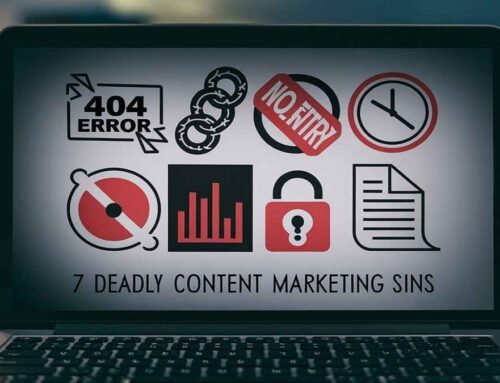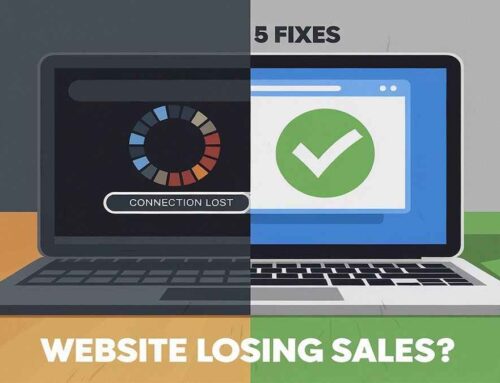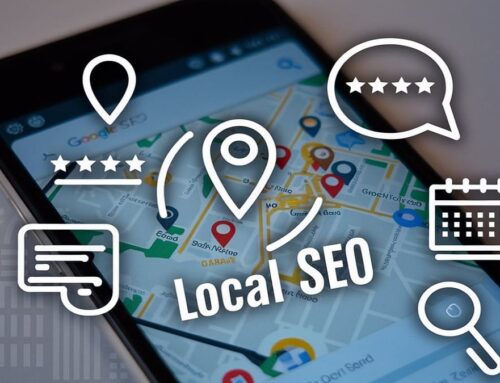
Content Marketing
In the world of business, one thing remains constant – Content is King. Whether you’re a small startup or a global giant, content marketing is the tool that will engage your audience and drive real results.
But what does content marketing mean in today’s landscape? And how can businesses truly connect with their audiences while achieving their goals?
Let’s dive in.
What is Content Marketing?
Content marketing is the art of creating valuable, relevant content to attract and engage an audience. The ultimate goal? To drive profitable customer action.
This content can come in many forms – blog posts, social media updates, videos, podcasts, infographics, e-books and more. But it’s not about pushing out sales-driven material. Instead, it’s about providing value.
When you offer something useful to your audience, you build trust. And trust leads to customer loyalty.
Why is Content Marketing Important?
Let’s face it: consumers today are bombarded with ads. Everywhere they look, brands are trying to sell them something.
But content marketing offers something different. It’s not intrusive. Instead of interrupting your audience with ads, you offer them something they actually want – information, entertainment or solutions to their problems.
In turn, this boosts your brand’s visibility, positions you as an industry leader and ultimately drives sales.
Types of Content Marketing
Content marketing is incredibly versatile. Here are some of the most effective forms:
- Blogging
A blog is a cornerstone of content marketing. It allows you to regularly share valuable insights with your audience while boosting your SEO. With the right strategy, a blog can drive traffic to your website and increase conversions. - Social Media
Platforms like Instagram, Facebook and LinkedIn provide the perfect space to share bite-sized content. Social media is ideal for engaging with your audience on a personal level and increasing brand awareness. - Videos
Video content is rapidly growing. People love consuming videos because they’re engaging and easy to digest. From how-tos to behind-the-scenes content, videos can be powerful tools to captivate your audience. - Email Marketing
Building an email list and regularly sending newsletters is a fantastic way to nurture leads. Emails can be personalized and targeted, offering immense value while keeping your brand top of mind. - Podcasts
Podcasts allow businesses to share their expertise and engage listeners in a more intimate way. They offer a unique space to connect with an audience on-the-go. - Infographics
These are perfect for breaking down complex data into easy-to-understand visuals. Infographics are shareable and can drive traffic back to your site.
Creating a Content Marketing Strategy
Jumping into content marketing without a strategy is like setting sail without a map. You might get somewhere, but it likely won’t be where you wanted to go.
Here’s how to create an effective content marketing strategy.
- Know Your Audience
Your content should be tailored to your audience. That means understanding who they are, what their problems are and how you can help solve them.
Conduct research. Use tools like surveys, social media polls and analytics to get a clear picture of your audience. The better you know them, the more effectively you can create content that resonates.
- Define Your Goals
What do you want to achieve with your content? Are you trying to increase brand awareness? Drive more traffic to your website? Generate leads? Knowing your goals will help guide your content creation.
Make sure these goals are SMART: Specific, Measurable, Achievable, Relevant and Time-bound.
- Choose Your Channels
Where does your audience spend their time? Are they on Instagram or LinkedIn? Do they prefer reading blog posts or watching videos? Focus your efforts on the channels that make the most sense for your business and audience.
It’s better to master one or two channels than to spread yourself too thin across five or six.
- Create a Content Calendar
Consistency is key in content marketing. A content calendar helps you stay organized and ensures you’re regularly putting out fresh material.
This calendar should include the types of content you’ll be creating, the dates they’ll be published and the platforms where they’ll be shared.
- Craft High-Quality Content
No matter the format, your content should always provide value. Ask yourself: is this content solving a problem? Is it entertaining or informative? Does it reflect my brand’s values?
Well-written, visually appealing content that addresses your audience’s pain points is what will keep them coming back for more.
- Optimize for SEO
SEO or Search Engine Optimization, ensures that your content is discoverable. When done right, it helps your content rank higher on search engine results pages (SERPs), driving more organic traffic to your site.
Incorporate keywords naturally, use meta tags and ensure your site is user-friendly. SEO is a long-term game, but it pays off.
Engaging Your Audience
Engagement is at the heart of content marketing. Creating content is just the first step – you also need to get your audience involved. Here’s how to boost engagement.
- Ask Questions
People love to share their opinions. Whether it’s on social media, in a blog post or via email, asking your audience questions is a great way to spark conversation.
For example, if you run a fitness brand, you might ask: “What’s your favorite post-workout meal?”
These types of open-ended questions not only engage your audience but also give you valuable insights into their preferences.
- Encourage User-Generated Content (UGC)
User-generated content is one of the best forms of social proof. Encourage your audience to share photos, videos or reviews of your products or services. When potential customers see real people engaging with your brand, it builds trust.
You can incentivize UGC by running contests or offering rewards.
- Respond to Comments
Engagement is a two-way street. When someone leaves a comment on your blog or social media post, take the time to respond.
This shows that you care about your audience and value their input. It also fosters a sense of community around your brand.
- Use Polls and Surveys
Polls and surveys are interactive tools that allow your audience to feel heard. They can be used to gather feedback, understand preferences or even just for fun.
For example, if you’re launching a new product, you could ask your audience what color they’d prefer.
- Host Live Sessions
Live videos or webinars give you the opportunity to engage with your audience in real-time. Whether it’s a Q&A session, a product demo or an educational webinar, live sessions help build stronger connections with your audience.
Plus, they give people the chance to ask questions and get immediate answers.
Measuring Content Marketing Success
How do you know if your content marketing efforts are working? The answer lies in data. Measuring your success is crucial to refining your strategy and achieving your goals.
Here are some key metrics to track:
- Website Traffic
If your goal is to drive traffic, this is one of the first metrics to look at. Tools like Google Analytics will show you how much traffic your content is bringing in and where that traffic is coming from.
- Engagement Metrics
Engagement can be measured by likes, comments, shares and time spent on a page. High engagement means your audience finds your content valuable and worth interacting with.
- Conversion Rates
Ultimately, content marketing should lead to conversions. Whether it’s a product sale, newsletter sign-up or another action, track how many people are taking the desired steps after consuming your content.
- Lead Generation
Content marketing is a powerful tool for generating leads. If you’re offering something like an e-book or webinar in exchange for contact information, track how many leads your content is bringing in.
- SEO Performance
SEO tools can help you track your content’s performance in search engines. Look at keyword rankings, organic traffic and the number of backlinks your content has earned.
Adapting to the Changing Landscape
Content marketing is constantly evolving. What worked last year might not work today. It’s important to stay flexible and adapt to new trends and technologies.
Here are some trends to keep an eye on:
- AI and Automation
AI tools are becoming increasingly sophisticated and can help with content creation, curation and analysis. Automation tools can also help streamline processes like social media scheduling and email marketing.
- Voice Search
With the rise of voice assistants like Siri and Alexa, optimizing your content for voice search is becoming more important. This means focusing on conversational keywords and creating content that answers specific questions.
- Video Content
Video continues to dominate. If you haven’t already, consider incorporating more video content into your strategy, whether through live sessions, how-tos or product demos.
- Personalization
Consumers expect personalized experiences. Tailoring your content to specific segments of your audience can lead to higher engagement and conversions. This can be done through email marketing, personalized product recommendations and dynamic content on your website.
- Sustainability and Ethics
More consumers are looking for brands that align with their values. Content that highlights your commitment to sustainability, ethics and social responsibility can help build a deeper connection with your audience.
Conclusion
Content marketing is a powerful way to engage your audience and drive results. By understanding your audience, creating high-quality content and consistently measuring your performance, you can create a content strategy that not only builds brand awareness but also drives real business outcomes.
In today’s crowded digital space, content marketing is the key to standing out and building lasting relationships with your customers. Stay creative, stay adaptable and most importantly – keep providing value.
CTA
Explore more insights and stay updated with our latest content by visiting our website https://usa-biz-growth.com regularly. Engage with us to discover additional resources and join the conversation today.
FAQs
Q: What is content marketing?
A: Content marketing is the art of creating valuable, relevant content to attract and engage an audience. The ultimate goal is to drive profitable customer action by offering useful information, entertainment or solutions rather than pushing sales-driven material.
Q: Why is content marketing important?
A: Content marketing is important because it provides value to consumers without being intrusive. Instead of interrupting audiences with ads, it offers information, entertainment or solutions to their problems. This boosts brand visibility, positions you as an industry leader and ultimately drives sales.
Q: What are some common types of content marketing?
A: Some common types of content marketing include:
- Blogging
- Social media updates
- Videos
- Email marketing
- Podcasts
- Infographics
Q: How do I create an effective content marketing strategy?
A: To create an effective content marketing strategy:
- Know your audience by conducting research and understanding their needs.
- Define SMART goals (Specific, Measurable, Achievable, Relevant, Time-bound).
- Choose the right channels where your audience spends their time.
- Create a content calendar to stay consistent.
- Craft high-quality, valuable content that reflects your brand’s values.
- Optimize your content for SEO to improve discoverability.
Q: How can I engage my audience through content marketing?
A: You can engage your audience by:
- Asking open-ended questions to spark conversations.
- Encouraging user-generated content (UGC) through contests or incentives.
- Responding to comments on blogs and social media posts.
- Using polls and surveys to gather feedback and preferences.
- Hosting live sessions like Q&A sessions, product demos or webinars.
Q: What metrics should I track to measure content marketing success?
A: Key metrics to track include:
- Website traffic (For example, using tools like Google Analytics).
- Engagement metrics (Likes, comments, shares, time spent on page).
- Conversion rates (For example, product sales, newsletter sign-ups).
- Lead generation (For example, tracking leads from e-books or webinars).
- SEO performance (keyword rankings, organic traffic, backlinks).
Q: What are some current trends in content marketing?
A: Some current trends in content marketing include:
- AI and automation for content creation, curation and analysis.
- Optimizing content for voice search due to the rise of voice assistants like Siri and Alexa.
- Incorporating more video content into strategies.
- Personalizing content for specific audience segments.
- Highlighting sustainability, ethics and social responsibility in content.
Q: How does content marketing help build trust with customers?
A: Content marketing helps build trust by providing value to customers through informative, entertaining or problem-solving content. When businesses consistently offer something useful, they establish themselves as reliable sources, which fosters customer loyalty.
Q: Is consistency important in content marketing?
A: Yes, consistency is key in content marketing. A content calendar helps ensure you’re regularly publishing fresh material, which keeps your audience engaged and reinforces your brand’s presence.
Q: How can I optimize my content for SEO?
A: To optimize your content for SEO:
- Incorporate relevant keywords naturally.
- Use meta tags (Title Tags, Meta Descriptions).
- Ensure your website is user-friendly and mobile-optimized.
- Focus on creating high-quality, valuable content that answers specific questions.
Q: What role does personalization play in content marketing?
A: Personalization tailors content to specific segments of your audience, leading to higher engagement and conversions. Examples include personalized email marketing, product recommendations and dynamic website content that adapts to user behavior.














